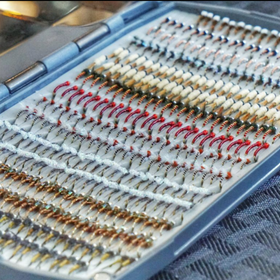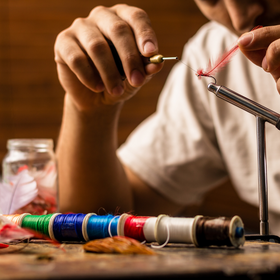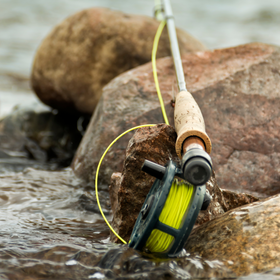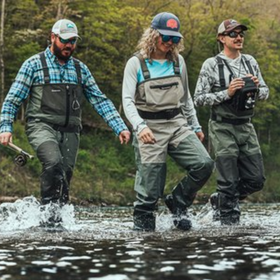Gratuity Guideline for your Fly Fishing Guide
It seems everyone expects tips these days.
The worst is when a fast food outlet or food vendor at a sports game flips the payment terminal over to you with a screen expecting a tip. A tip for what? To take your money for an overpriced $10 hotdog? For us, it's a bad precedent that takes away from providing a gratuity for the true service you expect from your waitstaff at a restaurant, or in our case for the expertise and service provided by your fly fishing guide.
Fly fishing guides provide an invaluable service to anglers by offering their expertise, knowledge of the local waters, and providing all the necessary equipment for a successful day on the river. In addition to their hard work and dedication, guides rely heavily on tips as a significant portion of their income in order to support their families. However, tipping guidelines for fly fishing guides can be unclear, especially for those who are new to the sport. In this article, we'll provide some guidance on how to tip your fly fishing guide.
First and foremost, it's important to remember that fly fishing guides work incredibly hard to ensure that our clients have an enjoyable and successful day on the water. Not only do they spend hours preparing equipment and lunches before the trip, but they also provide valuable instruction during your trip and advice on which flies to use and how best to set yourself up for success. Additionally, guides are responsible for ensuring the safety of our clients, which can involve navigating rapids or dealing with unexpected weather conditions, medical emergencies or accidents. Our guides are required to be first aid certified every two years. Given the amount of work and preparation that goes into guiding, it's generally recommended to tip your guide between 20-25% of the total cost of the trip. However, this can vary depending on a variety of factors, such as the length of the trip, the level of service provided, and the overall experience.
When it comes to tipping fly fishing guides, it's important to keep in mind that the standard practices for tipping wait staff at a restaurant may not apply. While a restaurant server's job may be to take your order, bring your food, and keep your drinks refilled over an hour or two, a guide's job involves much more than just showing up and providing a service. Guides are responsible for preparing all of the necessary equipment and ensuring that everything is in good working order. This can involve anything from tying flies to repairing rods and reels. In addition to the physical work, guides also invest a great deal of time and effort into building relationships with their clients, often going above and beyond to ensure that their needs are met and that they have a great experience on the water.
When deciding on a tip amount, it's important to consider the time and effort that the guide has invested outside of time spent on the trip itself. For example, if your guide spent several hours the night before tying flies or repairing equipment, you may want to consider a higher tip amount to reflect that extra effort. Additionally, if your guide provided exceptional service or went out of their way to ensure that you had a memorable experience, it's appropriate to tip accordingly.
While there is no one-size-fits-all approach to tipping, a general rule of thumb is to tip between 20-25% of the total cost of the trip. You can be sure that your tip reflecting their hard work and dedication is very much appreciated.





